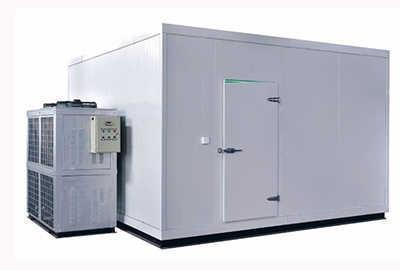
The Indispensable Role of Cooling Rooms in the Food Industry
- Description details
-
The Indispensable Role of Cooling Rooms in the Food Industry
The food industry is heavily reliant on the accurate control of conditions such as temperature and humidity throughout the food supply chain, from farm to table. One of the most vital components of this control system is the cooling room. This equipment, also known as cold storage, chillers, or refrigeration units, performs the critical function of preserving food quality and extending its shelf life. This article explores the role of cooling rooms in the food industry, outlining their purpose, the types of food they store, and their design and maintenance considerations.
Understanding the Purpose of Cooling Rooms
The central role of a cooling room is to mitigate the rapid growth of microorganisms on food products. Microorganisms, including bacteria, yeast, and mold, thrive at specific temperatures, primarily around room temperature. Cooling rooms, however, lower the temperature substantially below this optimum level, thereby significantly reducing microbial growth and delaying spoilage.
By slowing down bacterial activity, cooling rooms preserve the freshness of food, prolong its shelf life, and ensure the health and safety of the end consumers. This temperature-controlled environment is, therefore, essential in maintaining quality and preventing economic losses due to food wastage.
Types of Foods Stored in Cooling Rooms
Cooling rooms accommodate a wide variety of food products, each with unique storage requirements. Dairy products, meat, seafood, fruits, vegetables, and even prepared foods are often stored in these controlled environments. The optimal storage temperature and humidity levels for these foods vary, and must be maintained accurately to prevent spoilage and preserve the taste, texture, and nutrient content.
Crucial Parameters: Temperature and Humidity Control
Humidity, along with temperature, is a crucial parameter in a cooling room. While low humidity can cause foods to dry out, excessively high humidity can facilitate mold growth. A technologically advanced cooling room system precisely regulates both temperature and humidity to create an ideal environment for food preservation. The temperature in these rooms typically ranges between -40°F and 68°F (-40°C and 20°C), while the humidity is kept at levels from 85% to 99%.
Design Considerations for Cooling Rooms
The design of a cooling room takes into account several factors, including the type of food to be stored, the volume of goods, and the storage duration. The rooms should be well-insulated to maintain a consistent internal temperature and to prevent energy loss. The design also has to facilitate the efficient movement of goods, ensuring that the oldest stock is used first, following the 'First In, First Out' (FIFO) principle. Hygiene is another significant consideration, and thus, cooling rooms must be designed to be easily cleaned and maintained.
Importance of Monitoring and Maintenance
Cooling rooms require constant monitoring and maintenance to ensure they perform optimally. Sensors and automatic control systems are typically used to continually monitor the temperature and humidity levels. Regular checks and maintenance of the cooling systems, insulation, door seals, and other components are necessary to guarantee their proper functioning. Also, having a power backup is vital to prevent food spoilage during power outages.
In summary, cooling rooms are a crucial cog in the machinery of the food industry. They ensure food quality, extend shelf life, and enable regulatory compliance. Effective operation and maintenance of these cooling rooms are essential to preventing food waste and potential health hazards to consumers. Their role is, indeed, indispensable to the successful functioning of the food industry.
- About us
-
For more information:
📩 : Dieudonne.Nimubona@nirudi.com
🌐 : https://www.nirudi.com/en
...
